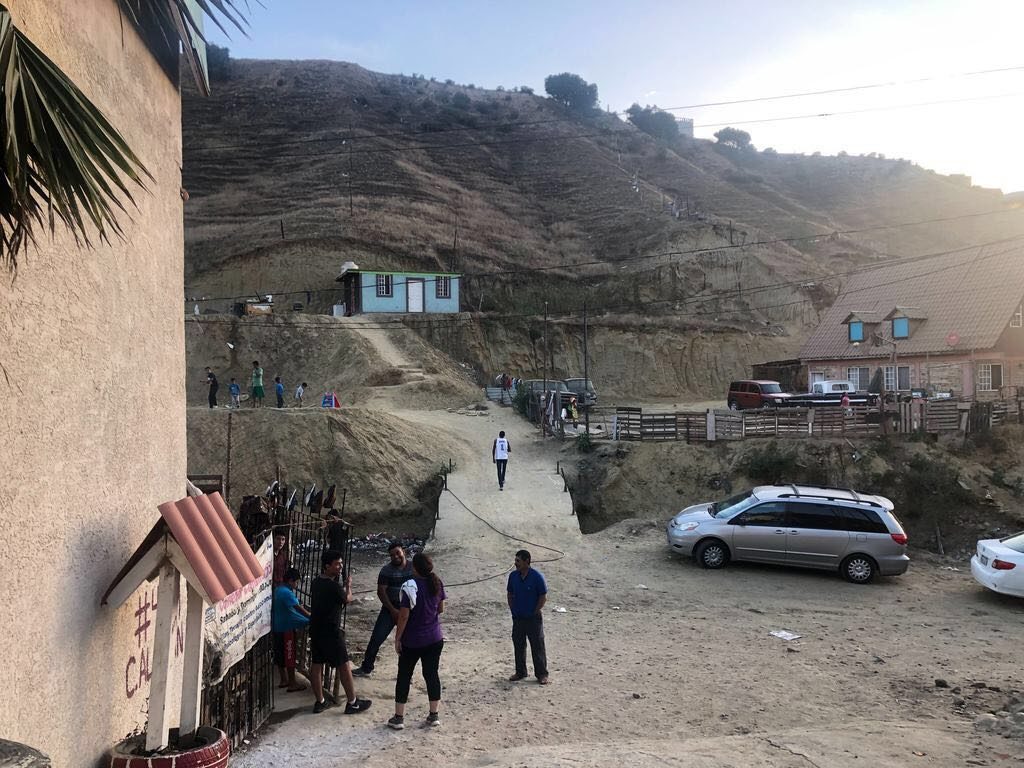Trump’s ‘Remain in Mexico’ policy keeps immigrants stuck at the border
A sudden scream and commotion alerted Esperanza Flores and her husband on a late afternoon earlier this year when they were home relaxing in San Pedro Sula, Honduras. Her husband opened the door and saw a group of men beating up a teenager. He rushed to help him.

By the time he realized they were part of the gang known as MS-13, it was too late.
Moments later, Flores felt helpless as she watched the gang members shoot and kill her husband. That’s when she knew she had to leave Honduras forever. A few days later, she and her elementary-age son Billy packed their belongings and went to seek asylum in the United States.
During their approximately 1,662 mile journey to the U.S., they walked, took buses and hitched rides. Police regularly removed people from buses, but that wasn’t enough to keep them from reaching their destination.
Flores is one of many migrants from Honduras, El Salvador, Venezuela and Haiti staying in a shelter in Tijuana, Mexico. Children run through the dirt while the older immigrants sit outside on rocks, chatting about their experiences.
Pastors operate the shelter through donations from San Diego and Tijuana. They drive to places where agents frequently drop off migrants to offer help.
“I’m very grateful to them,” Flores said in Spanish. “They offer us a place to sleep, even if it’s the floor.”
When they arrived at the Rio Grande in Coahuila, Mexico, they paid a Mexican man 300 pesos (about $14) to help them cross the border in plastic floaties. Flores says she remembers the goosebumps and fear she felt.
“But because of the desire to reach the United States,” Flores said, “one keeps going.”
Still, the journey has left scars — emotional and physical. A month after they began their journey, she and her son are still taking thorns out of their feet from walking.
After first crossing the border in July, they started walking around and got lost multiple times until they found a federal officer. The officer took them to a Texas facility, and they were transported to a detention center in San Diego. That’s where her nightmare started.
When they arrived at “La Hielera,” or “The Ice Box,” they were given aluminum sheets to keep warm. They had to wash down cookies — their only meal — with water from the toilet.
Women and children shared one room with an open bathroom.
“It was so embarrassing to get naked in front of the kids,” Flores said. “I wish we had some kind of human rights.”
She believed that after a few days of staying in the facility, she would be allowed to go. Instead, they were sent by ICE officials to Mexico.
“They dropped us off at a bridge and said we would be offered food and shelter, but that was a lie,” Flores said. “We stay under bridges with our kids crying and without money.”
Hundreds of migrants have been affected by President Donald Trump’s Migrant Protection Protocols, also known as the “Remain in Mexico” policy implemented to reduce the number of asylum-seekers in the U.S.

“I don’t have my asylum hearing until December, and I won’t go,” Flores said. “Many of us don’t believe in the system anymore.”
Because of the asylum backlog in immigration courts, many migrants wait for years and have to find a way to live while they wait. Migrants like Juan Pablo, who asked The Latino Reporter not to use his last name for fear of retribution, and his 7-year-old son can’t afford to wait six months for a court hearing. They left Honduras to escape gang activity and help their family.
“I came here in hopes of a fake dream, and now I know it’s not possible,” Juan Pablo said in Spanish as tears rolled down his cheeks.
While the overall approval rate for asylum-seekers is 35 percent, applicants from Honduras, El Salvador and Guatemala aren’t as successful, a study by Syracuse University’s TRACImmigration shows. On average about 21 percent of applicants from Central America receive asylum.
Although many people from Central America leave to escape their dangerous countries, they’re left to wait in Mexico, where they face similar situations.
“If they were going to send us back, they should send us to our hometowns,” Flores said, “not (Mexico) where there’s a danger.”
More than 32,000 migrants have been left in Mexico under the “Remain in Mexico policy,” since its start in January, according to the Department of Homeland Security. Since the policy began, asylum seekers have reported 110 cases of rape, kidnapping, sexual exploitation, assault and other violent crimes, according to a report by Human Rights First.
Flores plans to stay in the shelter until she can find a steady job and afford to rent a home in Mexico. She doesn’t want to stay there but, she says, it’s better than living in Honduras.
Flores can’t hold back the tears when she speaks about staying in Mexico. She feels guilty, unable to give her son the life she wanted for him.
“I regret my decision now,” Flores said. “I would’ve rather died the same day when they killed him, instead of coming here.”
She has a message for her fellow Central Americans: “Don’t leave your countries only to suffer.”
Patsy Montesinos is a 2019 NAHJ Student Project participant. She is a senior at the University of North Carolina, Chapel Hill, where she is studying journalism with an emphasis on Spanish-language broadcast. She spent her summer in Colombia producing a documentary about Afro-Colombians. Reach her at pmontes2@live.unc.edu and on Twitter at @montesinospatsy.